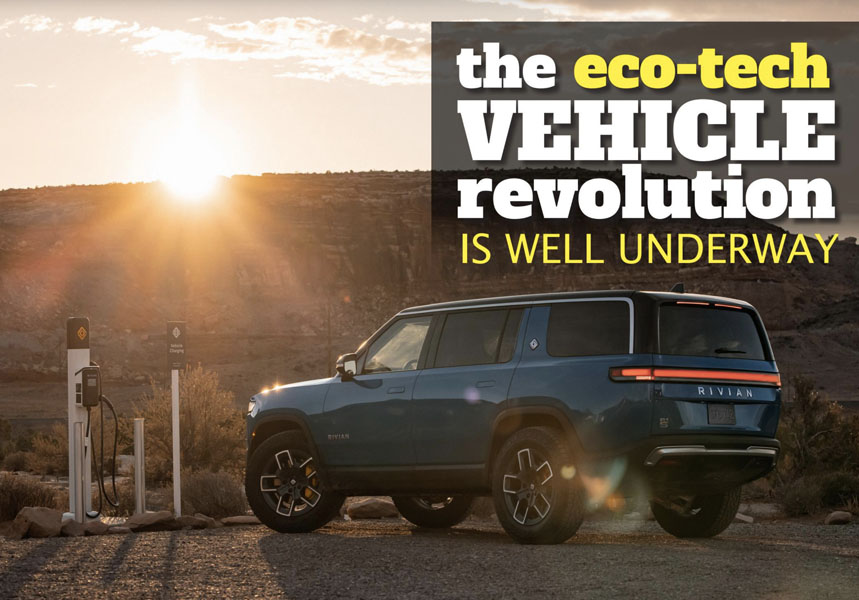
As natural disasters become more common and warnings about climate change become more urgent, discussion around the future of the global climate crisis recently took place in Scotland at the COP26.
And I think at this stage, most of us recognise that the time for sticking our heads in the sand is over as the writing is truly on the wall. Since COP 26 came to a close in November, many governments and vehicle manufacturers are now actively implementing and developing new strategies that will introduce huge changes when it comes to vehicle emissions by 2040, with some countries working towards 2030.So does that mean that we cannot drive our diesel and petrol vehicles post 2040, no not entirely true, we will still be able to drive petrol or diesel vehicles following the ban in 2040, the new rules will mostly affect new vehicles registered after that date. In many countries vehicles registered after 2040 will have to be zero-emissions vehicles.
So what were the main objectives of COP 26? Well in a nutshell,l it was about securing global net zero by mid-century and keep 1.5 degrees within reach.Countries have been asked to come forward with ambitious 2030 emissions reductions targets that align with reaching net zero by the middle of the century.
To deliver on these stretching targets, countries have been asked to :
- accelerate the phase-out of coal
- curtail deforestation
- speed up the switch to electric vehicles
- encourage investment in renewables.

Look, most of us get it, there is a need to move away from Diesel and Petrol engines and it’s not just about doing our bit for climate change, we also know that Nitrogen Dioxide is a harmful gas released from the exhaust of diesel and petrol engines and that this is linked to health issues like respiratory conditions, and with the world’s population increasing leading to more people wanting to drive vehicles we have to take action.

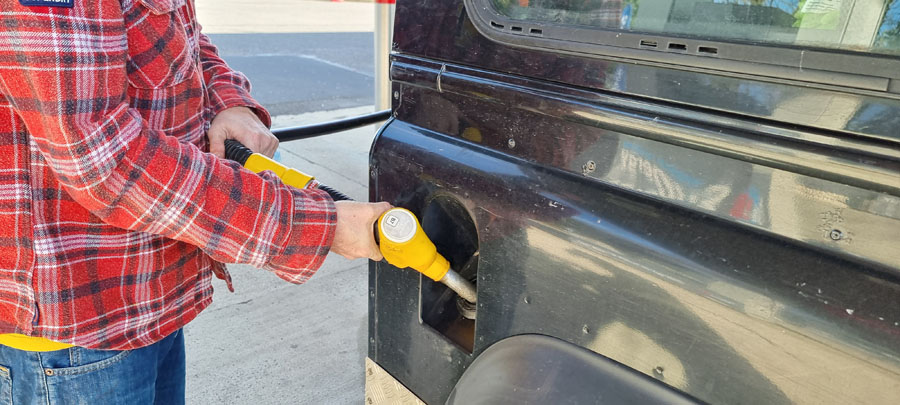
We are also going to see regions and cities throughout Europe, in the UK, and globally introducing stricter rules when it comes to non-electric vehicles traveling around and through urban centres. For example, the Brussels regional government recently announced a ban on diesel cars in the region by 2030 and petrol cars by 2035 in an effort to meet the European Union’s carbon neutrality goal by 2050.The ban will also apply to vehicles running on compressed natural gas, liquefied natural gas, and hybrids from 2035.
Low Emission Zone (LEZ) information
The increase in the number of electric and hydrogen powered vehicles is inevitable and in truth much needed as we race to try to reverse the affects of climate change before we go too far past the tipping point. Sadly, in turn this means the clock is ticking for many of our diesel powered 4×4 vehicles that we so love to use to get out and about and take us to places of adventure. Indeed recently in the UK alongside London which has had a Low Emission Zone in place for several years, recently other major cities in the UK have now introduced similar schemes whereby to take a non ULEZ compliant vehicle into a demarcated city centre area will incur a daily charge. Since June this year Birmingham, the UK’s second city, introduced a scheme that means a driver taking a non-ULEZ compliant vehicle into the city centre will incur a charge of £8 or 9.50 Euro. A similar scheme is already in operation in Bath and Portsmouth and Manchester, Bradford and several other cities lined up to introduce similar schemes next year.
Of course in Europe, this is nothing new, with LEZ’s or Umweltzonen as known in Germany, Milieuzones in the Netherlands, Lavutslippssone in Norway, Miljozone in Denmark and Miljozon in Sweden already in operation, in some cases since as long ago as 2008. Indeed an ever-growing number across the continent in places such as Paris, Lyon, Grenoble in France and Antwerp in Belgium also have similar schemes.It all begs the question, what is to become of our diesel and petrol-powered vehicles, how much longer have we got before they are taxed or legislated off the roads? Or will we be able to convert their power trains to a new clean / green power source that will let them live on in a greener world? I guess it’s a case of watch this space!

Globally, freight trucks and buses represent about 4% of the on-road fleet globally but are responsible for 36% of greenhouse gas emissions.
Switch to Electrical Vehicles
But this ambitious switch to electric vehicles will not be a straightforward transition. With many governments around the world now committed to these targets, the question really needs to be asked if they will be ready. One of the key questions is if national grids have the ability to handle the increased electrical load required to charge hundreds of thousands of new electric vehicles at the same time? But also if the required infrastructure to charge all of the newly introduced electrical vehicles can be put in place in time.
So who has signed up, the agreement to sell only zero-emissions vehicles includes Canada, New Zealand, the Netherlands, Ireland and the UK, which had already agreed to phase out new petrol and diesel car sales by 2030.In total twenty-four countries and a group of leading car manufacturers have committed to ending the era of fossil-fuel powered vehicles by 2040 “or earlier”.
Some of the vehicle companies that have signed up include Avera Electric Vehicles, BYD Auto, General Motors,Etrio Automobiles, Ford, Gayam Motor Works, GM, Jaguar Land Rover, Mercedes-Benz, Mobi, Quantum Motors and Volvo Cars, pledging to reach the goal by 2035. Also countries like India have agreed to “work intensely towards accelerated proliferation” of zero-emissions vehicles. It’s interesting to note that the BMW Group, Renault Group, Hyundai Motor Group, Stellantis, Toyota and the Volkswagen have not signed the deal.Toyota said: “Although we refrain from joining the statement, we share the same spirit and determination to address climate change and remain open to engage and work with stakeholders. Toyota will continue to contribute by making the best efforts to achieve carbon neutrality.”

But is not all about cars, we are also going to see some major changes in the Truck, Bus and Van industry. Its interesting to note that “Globally, freight trucks and buses represent about 4% of the on-road fleet globally but are responsible for 36% of greenhouse gas emissions, and over 70% of nitrogen oxide emissions that contribute to local air pollution,” Cristiano Façanha, CALSTART’s global director, said in a statement. “This makes trucks and buses a very effective target for fast decarbonization.” Fifteen countries also agreed to a separate pledge to work toward 100% zero-emission sales of new trucks and buses by 2040
Let’s have a look at what’s happening in the industry particularly when it comes to the development of 4WD electric vehicles.There is no doubt about it, we are all starting to see some innovative eco-friendly electric vehicles coming to the market, and if some of the pre-orders are anything to go by well, the future does look bright for electric 4WD’s.
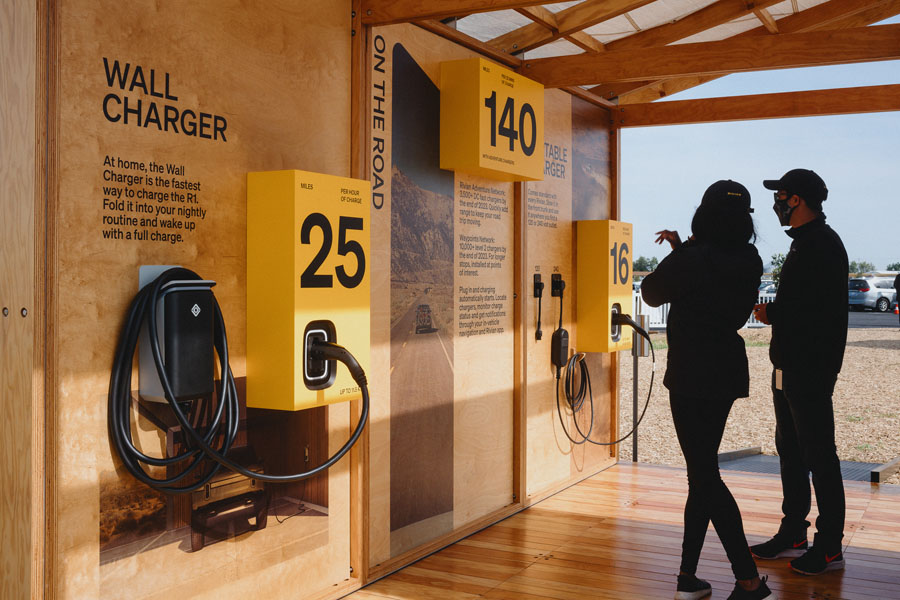
But for many 4WD owners, the decision to move towards an electrical vehicle is in our view a lot more challenging than those who drive cars. A lot of it also depends on where you are from, for example for those living in some European countries it will be difficult to sustain your beloved 4WD going into the future whereas, in countries like Australia where the idea of having an electrical 4WD is widely not very well received, for various reasons including the sheer size of the country and the extreme remote environments that tourers venture into, It is also worth noting that Australia has not signed up to key targets identified at the Cop 26.
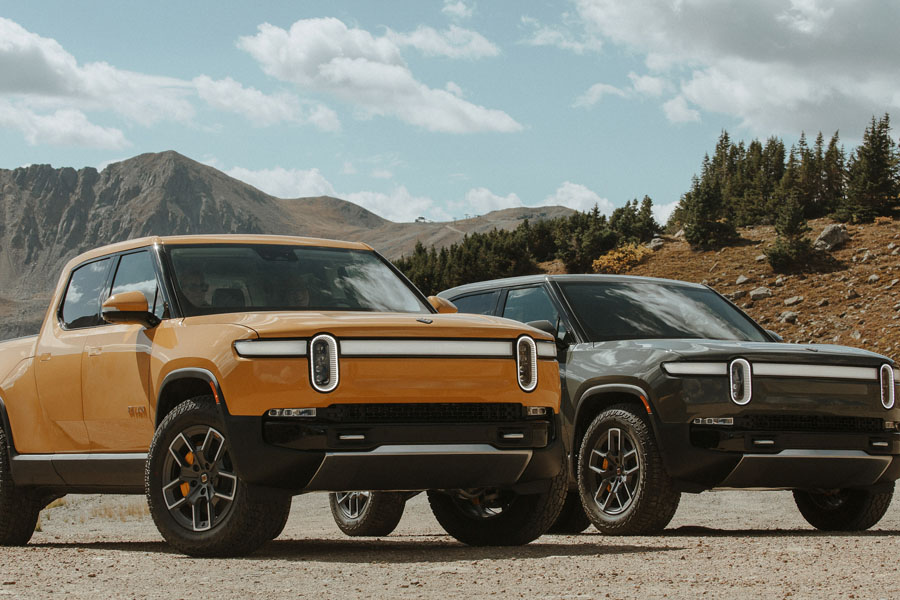
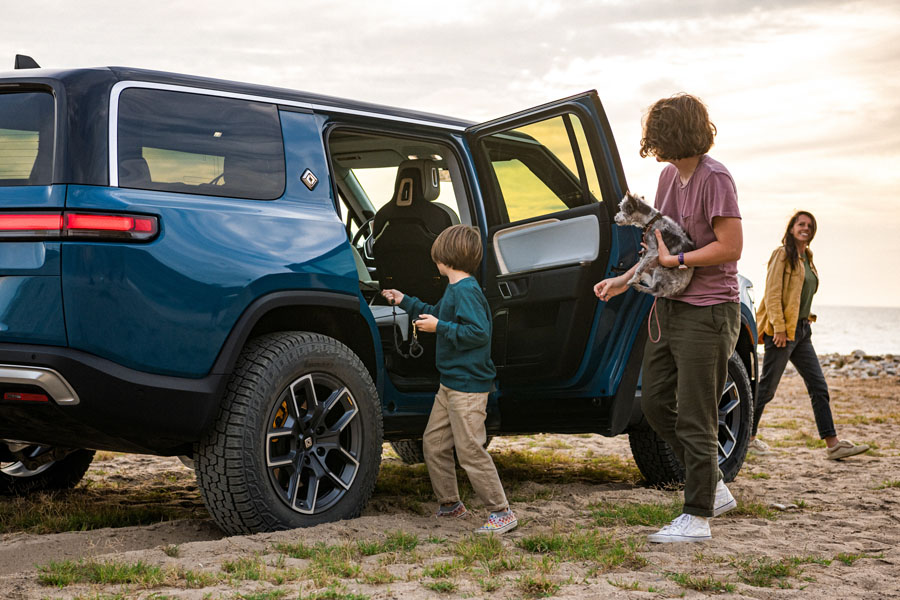
But all of this does not necessarily mean that you need to purchase a new electrical 4WD. There are options out there with new companies now offering electrical conversions, though this is an expensive option at the moment, the cost to convert will inevitably come down as the technology improves. In a nutshell, converting to a fully electric 4WD will not only save you money on fuel bills, ongoing maintenance but also servicing as electric drive systems are generally maintenance-free so that is worth considering.
Whether we like it or not, future transport will be electric.Vehicles leading the electrical charge include the Tesla Cybertruck, the Ford F-150, the Hummer EV the Rivian R1T and the recently announced EF1-T from EdisonFuture are pretty much all offering independent four-wheel control and lots of other awesome new features. With camper vans also now making the transition we have a closer look at some of these options over the next few pages.
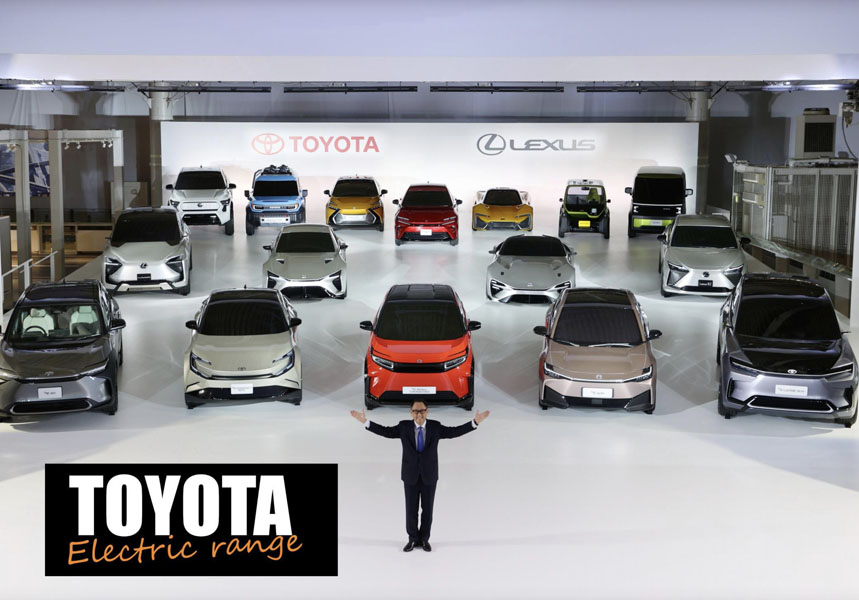
T his month Toyota’s President Akio Toyoda unveiled Toyota’s ambitious strategy for achieving carbon neutrality particularly for battery electric vehicles, with a preview of 30 models that are on the way. He said ’’I believe that achieving carbon neutrality means realizing a world in which all people living on this planet continue to live happily.We want to help realize such a world. This has been and will continue to be Toyota’s wish and our mission as a global company.For that challenge, we need to reduce CO2 emissions as much as possible, as soon as possible.We are living in a diversified world and in an era in which it is hard to predict the future. Therefore, it is difficult to make everyone happy with a one-size-fits-all option.That is why Toyota wants to prepare as many options as possible for our customers around the world’’ said Mr Toyoda.He also went on to say that all electrified vehicles can be divided into two categories, depending on the energy that they use.One category is that of “carbon-reducing vehicles”.If the energy that powers vehicles is not clean, the use of an electrified vehicle, no matter what type it might be, would not result in zero CO2 emissions.The other category is that of “carbon-neutral vehicles”. Vehicles in this category run on clean energy and achieve zero CO2 emissions in the whole process of their use.
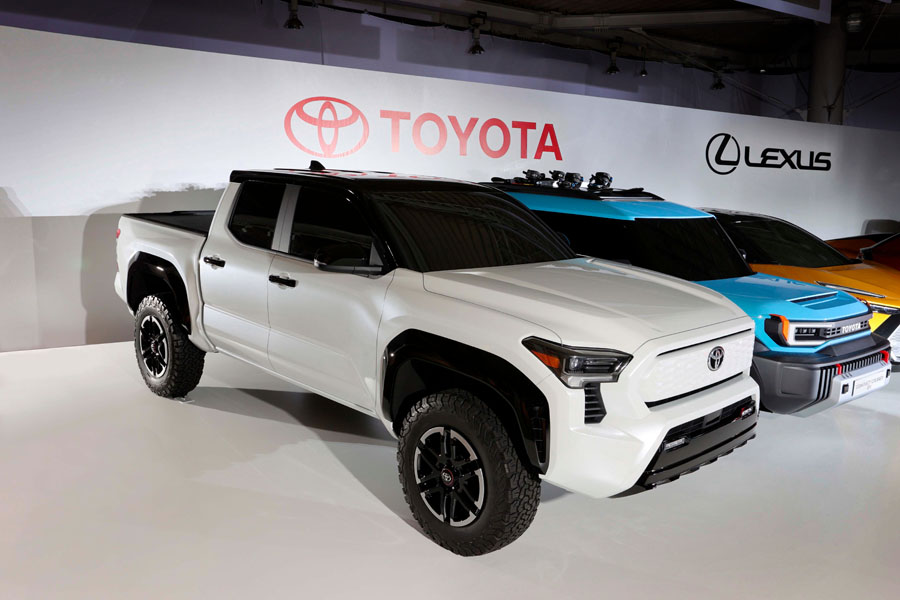
Toyota plans to roll out 30 battery EV models by 2030, globally offering a full lineup of battery EVs in the passenger and commercial segments. We do not have a lot of information on the 4WD options at time of writing, though one of the 30 vehicles showcased includes a cool looking pickup that looks very impressive, we will probably have more details in 2022. Like most vehicle manufacturers Toyota does seem to be taking the electric market very seriously, having invested 17.6 billion dollars in battery technology and with a target of selling 3.5million electric vehicles around the world by 2030. We will watch this space.
This month Toyota’s President Akio Toyoda unveiled Toyota’s ambitious strategy for achieving carbon neutrality particularly for battery electric vehicles, with a preview of 30 models that are on the way. He said ’’I believe that achieving carbon neutrality means realizing a world in which all people living on this planet continue to live happily.We want to help realize such a world. This has been and will continue to be Toyota’s wish and our mission as a global company.For that challenge, we need to reduce CO2 emissions as much as possible, as soon as possible.We are living in a diversified world and in an era in which it is hard to predict the future. Therefore, it is difficult to make everyone happy with a one-size-fits-all option.
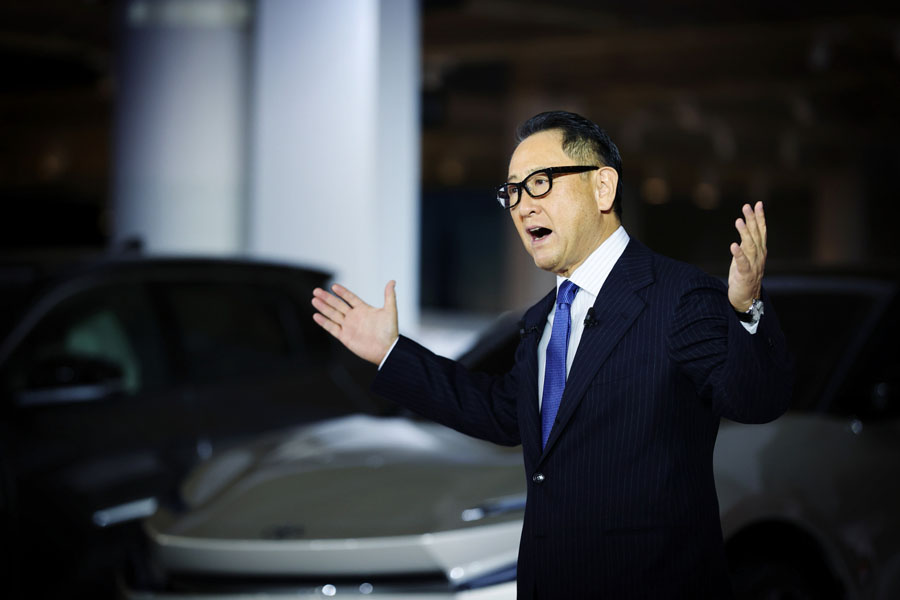
Akio Toyoda, Toyota’s president, has unveiled Toyota’s ambitious strategy for achieving carbon neutrality particularly for battery electric vehicles, with a recent preview of 30 models that are on the way.
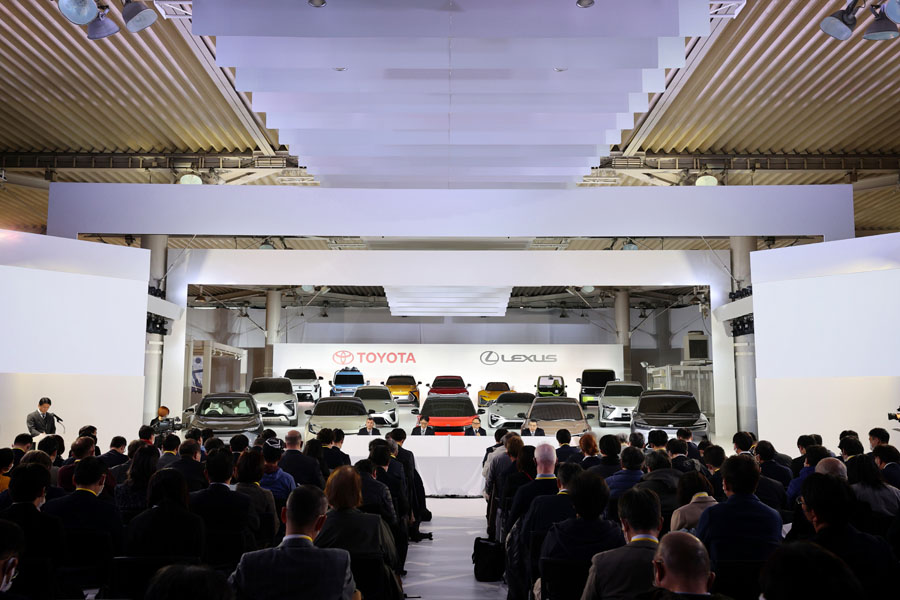
That is why Toyota wants to prepare as many options as possible for our customers around the world’’ said Mr Toyoda.He also went on to say that all electrified vehicles can be divided into two categories, depending on the energy that they use.One category is that of “carbon-reducing vehicles”.If the energy that powers vehicles is not clean, the use of an electrified vehicle, no matter what type it might be, would not result in zero CO2 emissions.The other category is that of “carbon-neutral vehicles”. Vehicles in this category run on clean energy and achieve zero CO2 emissions in the whole process of their use.
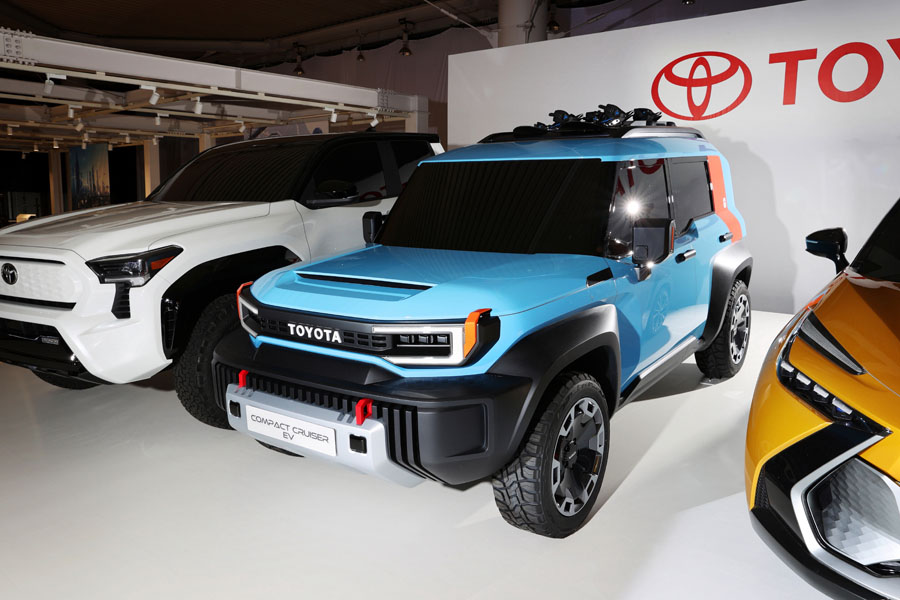
Toyota plans to roll out 30 battery EV models by 2030, globally offering a full lineup of battery EVs in the passenger and commercial segments. We do not have a lot of information on the 4WD options at time of writing, though one of the 30 vehicles showcased includes a cool looking pickup that looks very impressive, we will probably have more details in 2022. Like most vehicle manufacturers Toyota does seem to be taking the electric market very seriously, having invested 17.6 billion dollars in battery technology and with a target of selling 3.5million electric vehicles around the world by 2030.
We will watch this space.
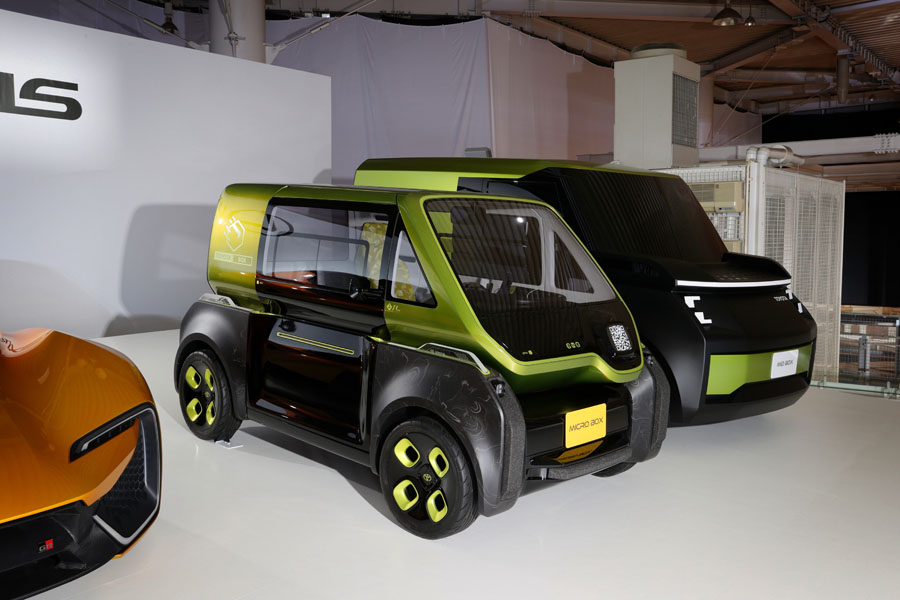
TESLA Cybertruck
T h he Tesla Cybertruck has been hugely popular since being introduced to the world in 2019, with orders continuing to be made in high numbers despite the vehicle’s release being delayed until 2022, this electric vehicle has definitely captured people’s attention.The Cybertruck is the second major Tesla vehicle outside the mainline S, 3, X, Y lineup. The first outsider actually predated the line: the Roadster.

The futuristic looking vehicle is built with an exterior shell made for ultimate durability and passenger protection. Starting with a nearly impenetrable exoskeleton, every component is designed for superior strength and endurance, from Ultra-Hard 30X Cold-Rolled stainless-steel structural skin to Tesla armour glass.
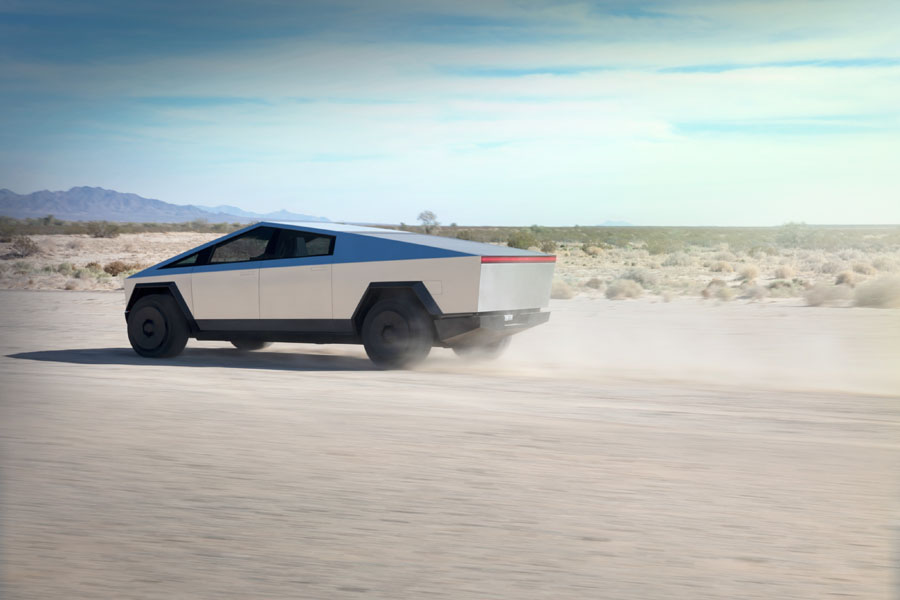
The low-end Cybertruck, which has a single-motor and rear-wheel drive, should get 250 miles per charge. The dual-motor all-wheel-drive version, should get 300 miles of range. And the trimotor with all-wheel drive will cost $69,900 or approx. €61,000 with 500 miles of range. All versions of the pickup will have Tesla’s Autopilot, advanced driver-assist features standard. An optional “self-driving” package costs $7,000 if customers order it today and are willing to wait for autonomous driving features that have yet to be developed.The Cybertruck can go from 0 to 60 mph in less than 6.5 seconds at the low end, and in 2.9 seconds at the high end. The midrange dual-motor version does it in 4.5 seconds. Towing capacity for the single motor version is around 7,500 pounds, dual-motor around 10,000 pounds and trimotor around 14,000 pounds.
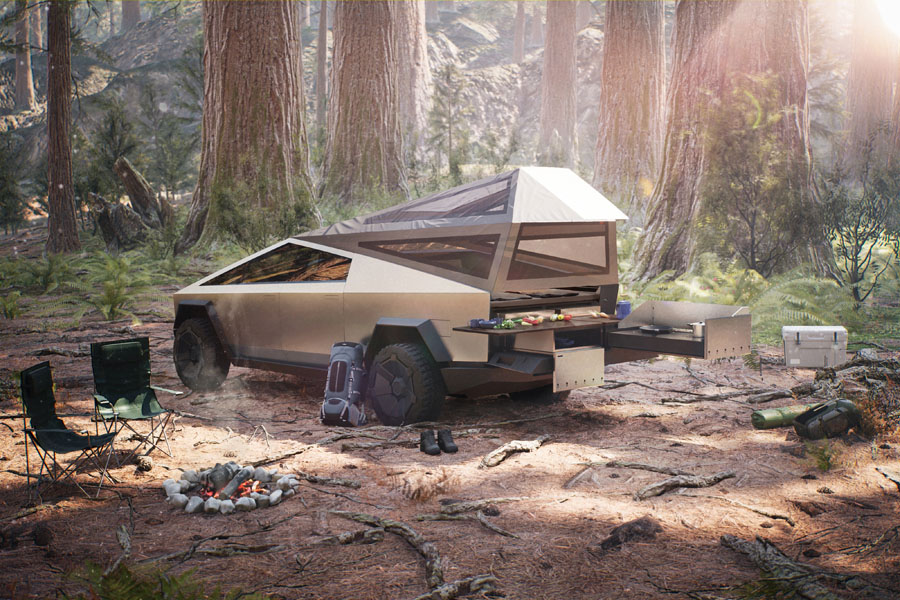 Tesla has confirmed rumours of the delayed launch of the Cybertruck electric pickup truck, revealing the much-awaited truck will only roll off production lines next year.. Following a recent update, the Tesla Cybertruck’s order page now reads, ‘You will be able to complete your configuration as production nears in 2022.’The delay isn’t exactly surprising, though, as the Cyberstuck’s production is already behind schedule. When Tesla CEO Elon Musk unveiled the Cybertruck in 2019, it was supposed to be on the assembly line in the latter half of 2021. When Tesla’s fourth-quarter earnings call happened in January this year, Musk said a “few deliveries” of the Cybertruck would happen towards the end of this year. However, he said he expected mass production to begin only in 2022.
Tesla has confirmed rumours of the delayed launch of the Cybertruck electric pickup truck, revealing the much-awaited truck will only roll off production lines next year.. Following a recent update, the Tesla Cybertruck’s order page now reads, ‘You will be able to complete your configuration as production nears in 2022.’The delay isn’t exactly surprising, though, as the Cyberstuck’s production is already behind schedule. When Tesla CEO Elon Musk unveiled the Cybertruck in 2019, it was supposed to be on the assembly line in the latter half of 2021. When Tesla’s fourth-quarter earnings call happened in January this year, Musk said a “few deliveries” of the Cybertruck would happen towards the end of this year. However, he said he expected mass production to begin only in 2022.
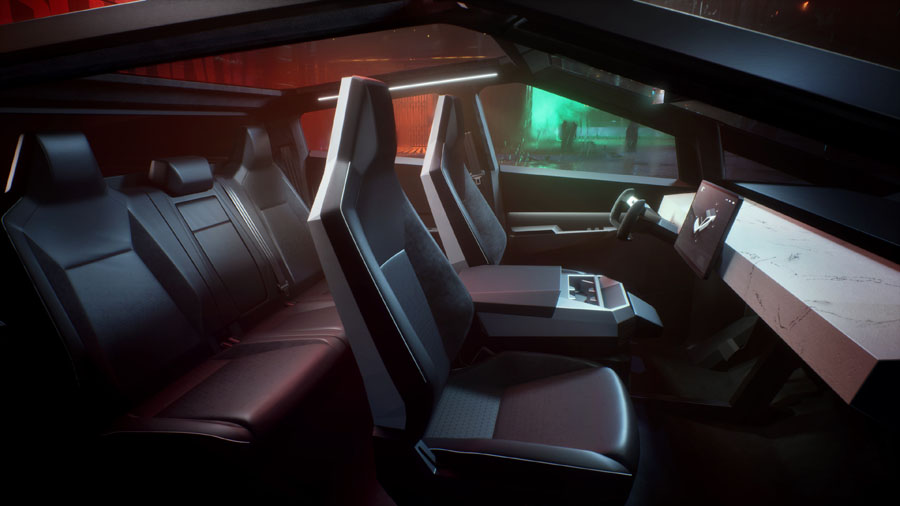
Rivian R1T & R1S
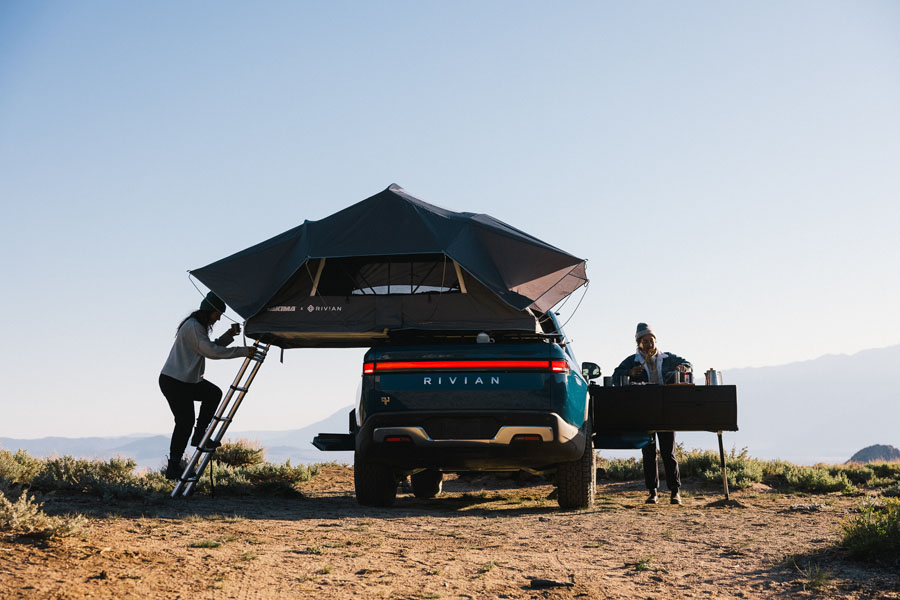
A major competitor to Tesla, Rivian has developed and vertically integrated a connected electric platform that can be flexibly applied to a range of applications, including the company’s adventure products as well as B2B products such as their last mile delivery vans. The company’s launch products, the R1T and R1S, claim to provide an unmatched combination of performance, off-road capability and utility.The R1T boasts up to 800 horsepower and a claimed zero-to-60-mph time of 3.0 seconds. Adjustable air suspension will be standard and can adjust the clearance height from eight to 14 inches. Every version of the R1T has all-wheel drive, with an electric motor at each wheel.
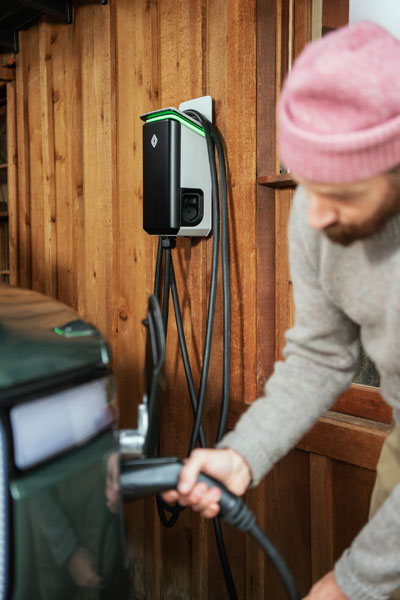
The Launch Edition R1T features a battery pack with a 300-mile driving range. The vehicle comes well-equipped with an array of driver-assistance features as well as a host of infotainment and connectivity technologies. Rivian also offers both the entry-level Explore model and the well-equipped Adventure. A larger battery pack that is said to deliver around 400 miles of driving range is available for an extra$10,000 or 8,800 euros.

As a company Rivian takes Climate Action very seriously.Rivian and global conservation group The Nature Conservancy (TNC) have a collaboration dedicated to preserving biodiversity and fighting climate change. This partnership leverages the capabilities of both organizations, providing valuable resources and public education opportunities while creating new avenues for responsible access to natural spaces.
As part of the relationship, Rivian will provide TNC with vehicles to use at its preserves—specifically at sites in California, Wyoming, Oklahoma, and Florida. Rivian vehicles are inherently quieter than conventional trucks, equipped for the most challenging off-road conditions, and produce no tailpipe emissions, providing unique benefits and research possibilities for sensitive ecological areas. TNC will share data collected to help enhance the development of new off-the-beaten-path driver experiences.
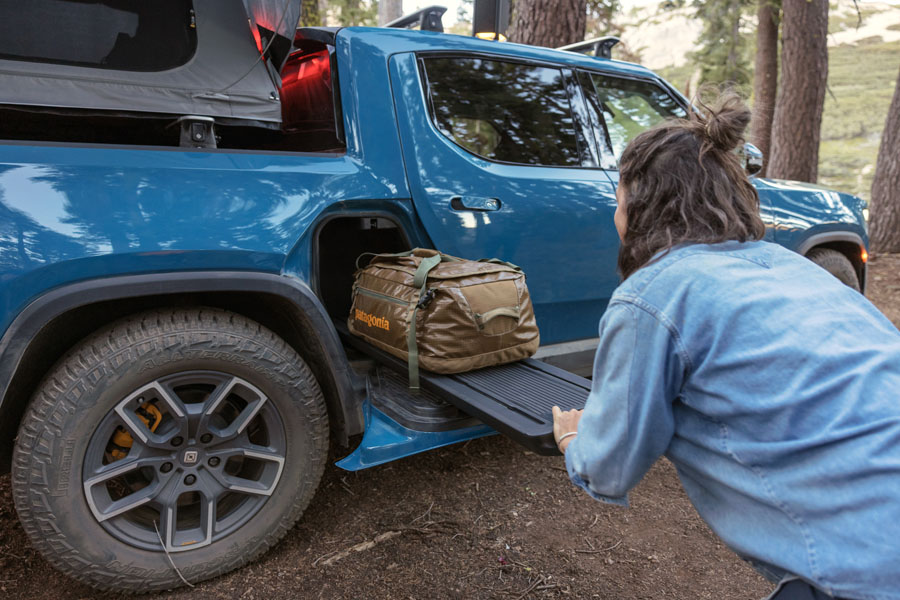
“Rivian vehicles have been developed to enable and inspire a connection with the natural world, and our partnership with The Nature Conservancy allows us to further help protect these wild places we care about”said Rivian Founder and CEO RJ Scaringe. “We share a common, deep commitment to safeguard the planet’s lands and waters, and we’re excited to collaborate alongside an organization with such broad impact in land restoration and conservation.”“Our relationship with Rivian heralds a new kind of partnership, showing how smart, clean technology can work with nature to address the twin crises of climate and biodiversity loss. It’s exciting to imagine the possibilities for tech-enabled conservation, and these vehicles are blazing a trail for the future,” according to Jennifer Morris, CEO of TNC. TNC will also participate in the Rivian Waypoints charging stations rollout, supporting the deployment of chargers in select locations across TNC’s nationwide preserve network. The organisations will work together to demonstrate the importance of electrified transportation as a tool to combat the climate crisis.
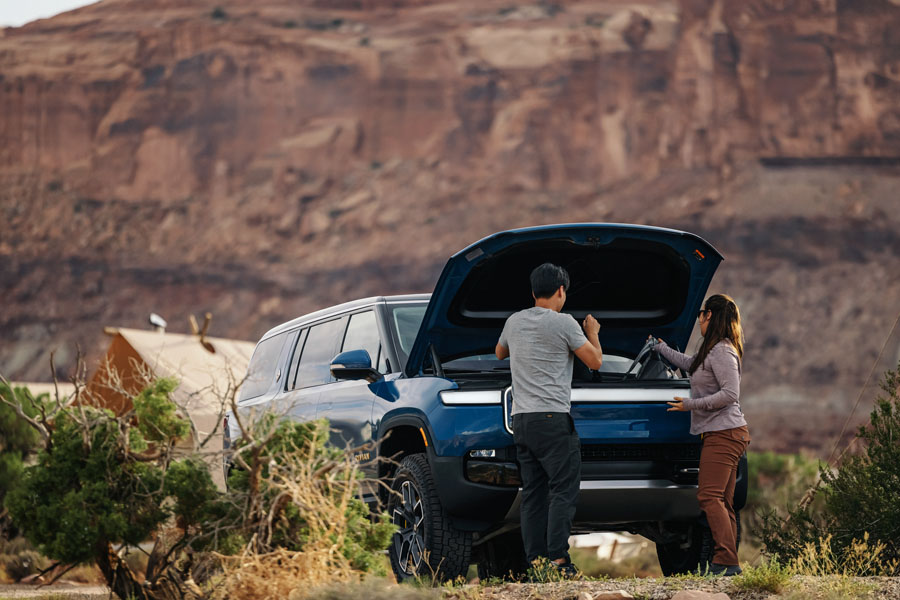
Rivian and TNC also intend to expand their relationship to include: advocacy for transportation, energy, climate, and conservation issues; conserving and restoring important natural places; and helping people learn more about nature, how they can protect it, and have fun outdoors.
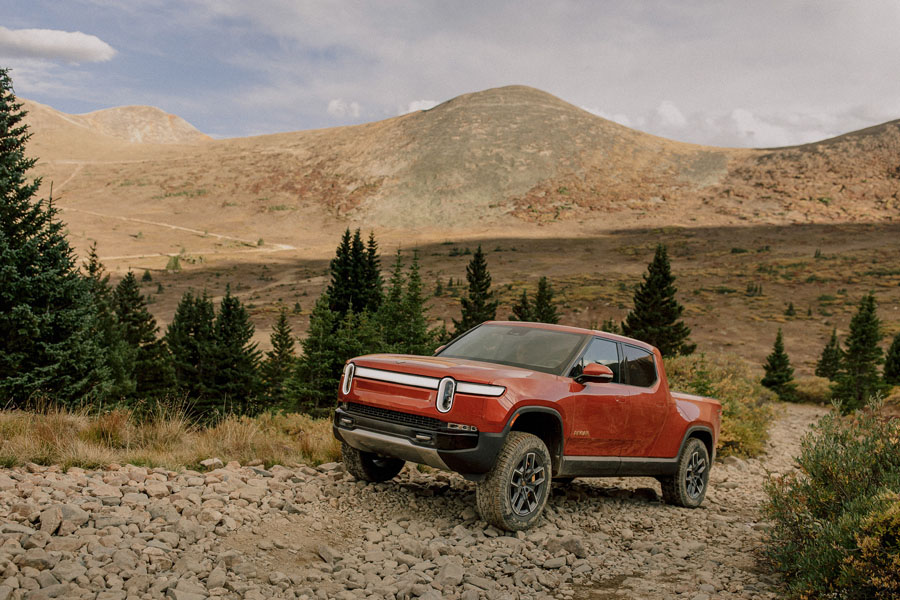
EDISON EF-T Pickup
We also now have a new player on the block called the Edison Futures EF-T e-pickup. Recently debuted at the LA auto show and certainly turned heads with its innovative telescope-like solar canopy on the roof and tray. EdisonFuture’s EF1-T e-pickup truck, developed in partnership with Icona and leading automaker partners, is the first product in a line of advanced all-electric pickup trucks ad last-mile delivery vans incorporating Edison Future & Phoenix Motor’s vision for human-centered future transportation and revolutionize how customers and vehicles interact.The EF1-T standard model comes equipped with total power of 350 kilowatts (kW), or 470 horsepower (HP), while EdisonFuture’s top of the line “Super” model offers 600kW, or 816HP.An ideal solution for utility and commercial customers, the EF1-T e-pickup trucks use a uniquely designed solar mosaic technology that provides a stunning visual signature while also harnessing the power of the sun to recharge the batteries, enabling work vehicles to continuously charge while in the field.
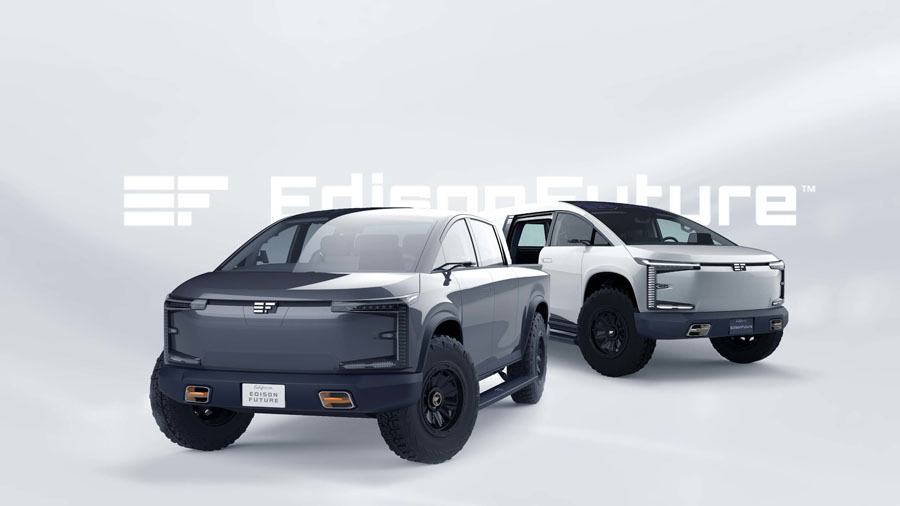
“Our vision for EdisionFuture and Phoenix Motorcars is to be leaders in sustainable transportation with focus on energy efficiency and innovative design,” stated Mr. Xiaofeng Peng, Chairman & Chief Executive Officer of SPI Energy. “We have already filed multiple design and technology patents in the US related to the EF1-T and look forward to introducing this game-changing vehicle to the market in the coming months.”
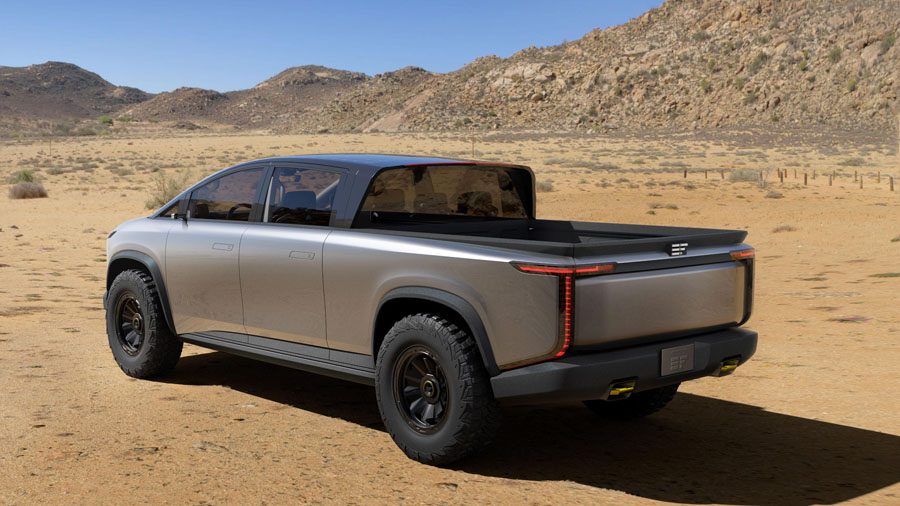
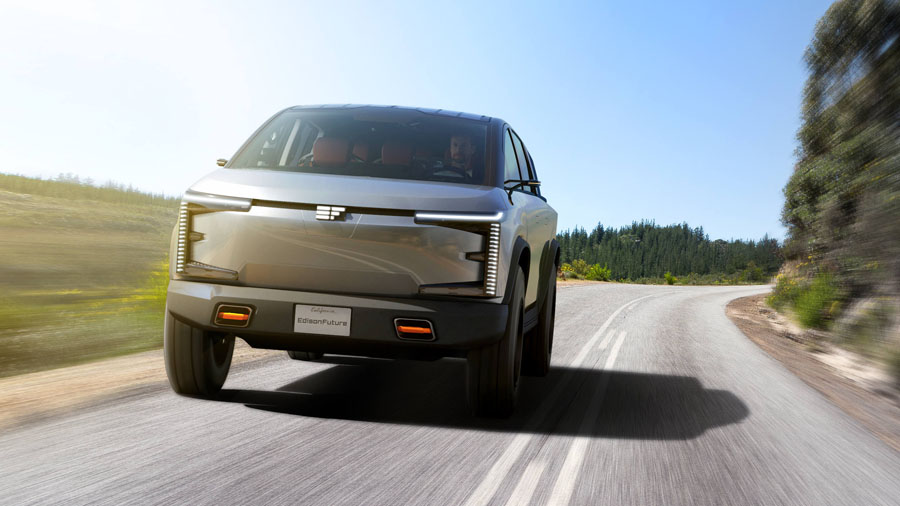
Grenadier Hydrogen Option
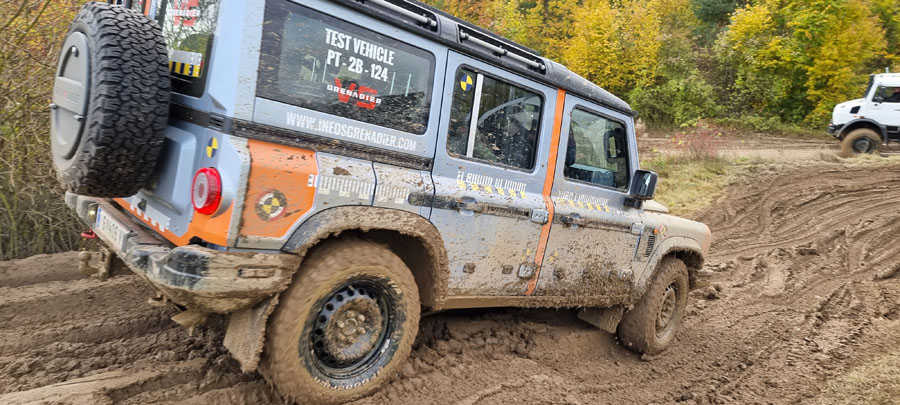
The first Grenadiers will start to reach customers in the third quarter of 2022, powered by the latest petrol and diesel engines from BMW. But INEOS is also looking further ahead to zero emissions powertrain technology for the future. The company has announced that a hydrogen fuel cell demonstrator vehicle is under development and will begin testing by the end of next year, as part of INEOS taking a leading role in the hydrogen revolution. To develop the demonstrator model, INEOS Automotive is partnering with AVL, one of the world’s leading automotive powertrain engineering specialists Of the zero emissions technologies being evaluated for future introduction in the Grenadier, the INEOS Automotive team believes that hydrogen fuel cells is the most attractive. When enabled by sustainably produced green or blue hydrogen, fuel cells are a very clean way to power vehicles capable of long range between rapid refuelling stops. And they also offer significant weight advantages over battery electric vehicles.
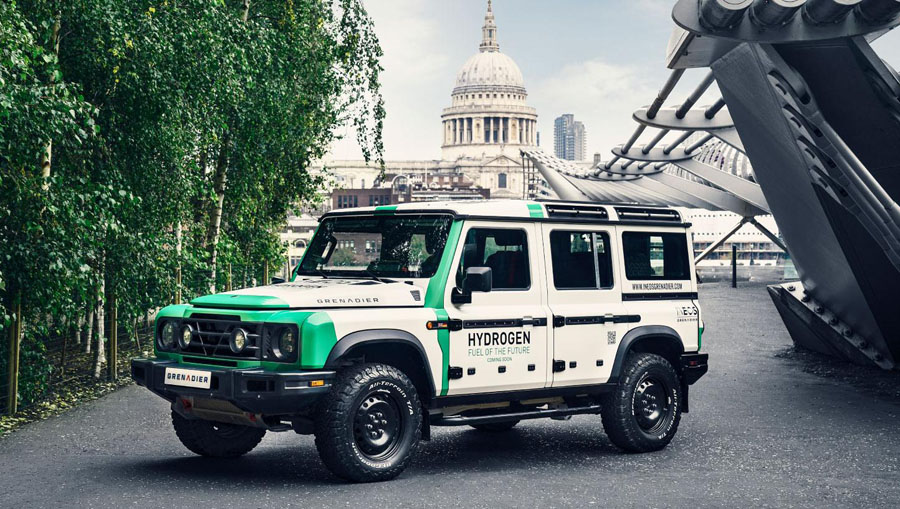
Of course, critical to any future alternative-fuel powertrain is that it must retain or even enhance the Grenadier’s performance and capability. There will be no compromising the vehicle’s Built on Purpose philosophy.
As a global chemical company, INEOS already produces over 400,000 tonnes of low carbon hydrogen a year. With the expertise to make it, capture it and store it safely, INEOS is uniquely positioned to be at the heart of green hydrogen development. The last piece of the puzzle is to create a hydrogen infrastructure to support widespread adoption, and INEOS is campaigning hard to make sure this gets done.
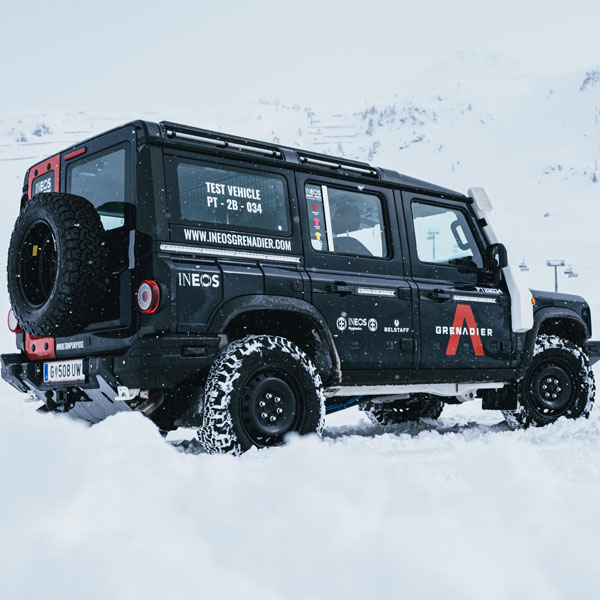
There is a global drive to net zero emissions and to meet targets set by countries around the world. The team behind the Grenadier fully supports this mission and the fuel cell demonstrator vehicle is a big step in the right direction.
HUMMER EV from GMC
Another competitor, the 2022 GMC HUMMER EV claims to be the first-of-its-kind supertruck developed to forge new paths with zero emissions. With a strong foundation of manufacturing trucks since 1902 and now selling in a dozen countries across the world, GMC offers purpose-built vehicles designed and engineered to the highest standard. From the all-new compact SUV Terrain to the Sierra HD, their trucks and crossovers deliver GMC’s signature combination of intuitive technologies.
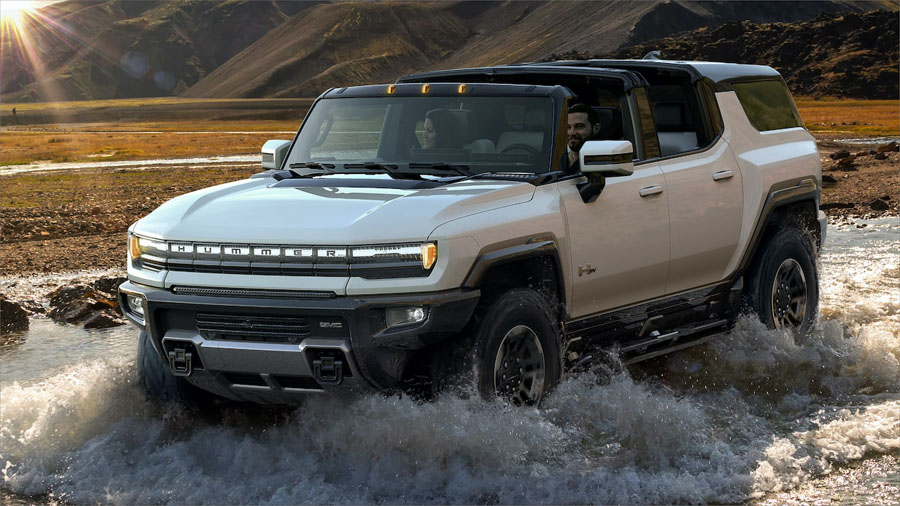
Some of these features will be available Terrain Mode One-Pedal Driving, available Watts to Freedom† and the Bose† Electric Vehicle Sound Enhancement technology.The HUMMER EV’s Terrain Mode will be tailored for such off-road experiences. It is one of the vehicle’s five driving modes and will offer two selectable braking calibrations. The mild-braking calibration is ideal for two-pedal driving on mild, less technical terrain. The second calibration is One-Pedal Driving, which is for low-speed, off-road technical scenarios. According to the developers this gives the driver greater control when taking on rugged environments.
“One-Pedal Driving allows for precision handling at low speeds while off-roading and rock crawling,” Pfau said. “It combines the fine control of the immediate torque provided by the EV propulsion system and the conventional brakes to deliver a level of modulation that is beyond anything we could deliver from a gas- or diesel-powered engine.”
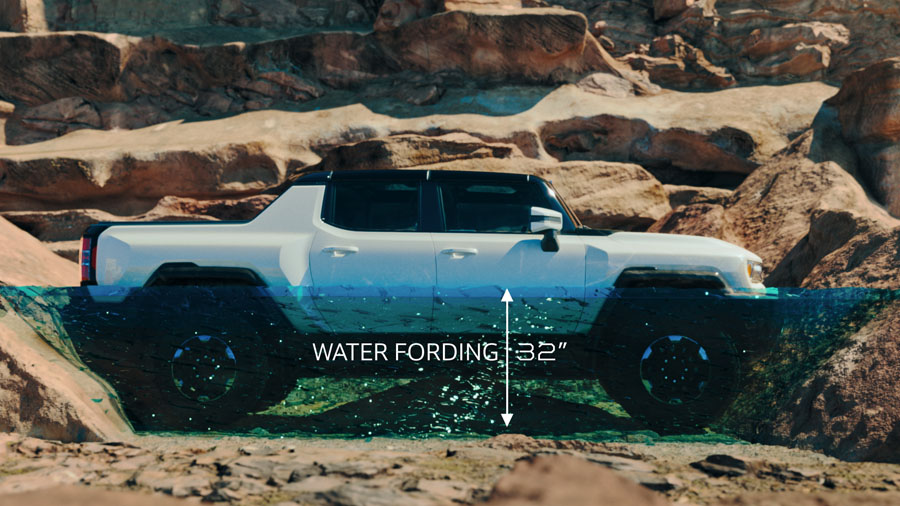
The GMC HUMMER EV is designed to be an off-road beast, with all-new features developed to conquer virtually any obstacle or terrain.
“The HUMMER EV celebrates the performance possibilities of electric propulsion,” Pfau said. “This is a truck you want to drive because it delivers performance in a way that no other truck can match, and it happens to have zero emissions.”
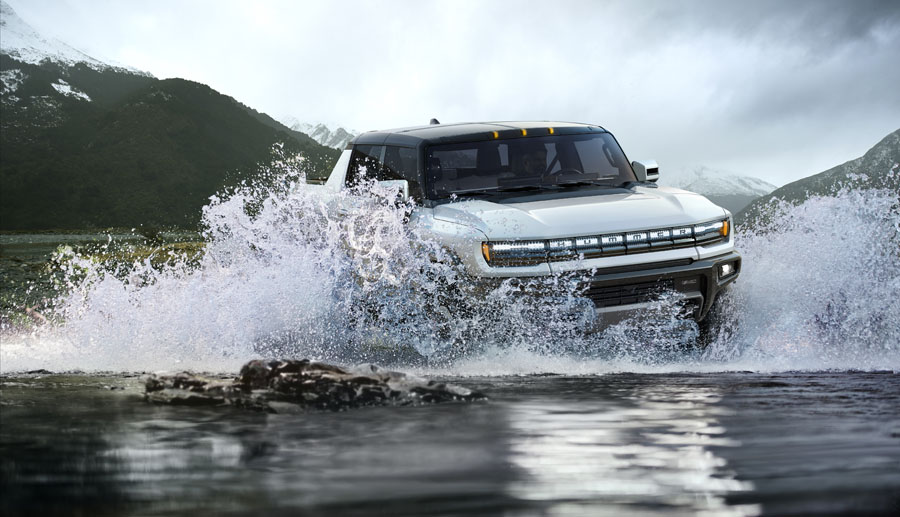
The GMC HUMMER EV is designed to be an off-road beast, with all-new features developed to conquer virtually any obstacle or terrain.
For those of you who love your music, In addition, the HUMMER EV is the first GMC vehicle to have Bose’s advanced Electric Vehicle Sound Enhancement. This standard feature optimizes the acoustic environment inside the cabin. Combined with this sound enhancement technology, GMC and Bose engineers worked together to develop unique sound characteristics for some of the HUMMER EV’s available drive modes.
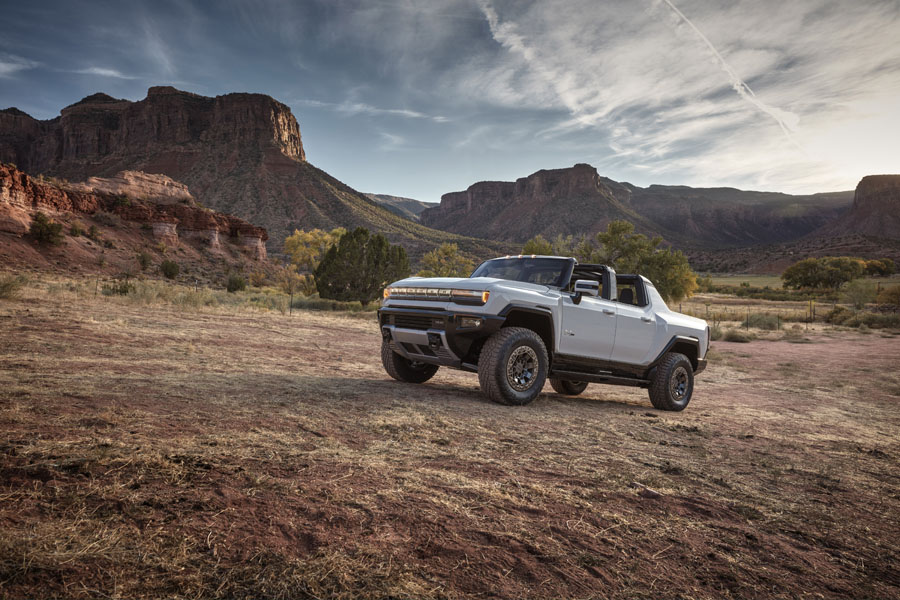
The GMC HUMMER EV is driven by next-generation EV propulsion technology that enables unprecedented off-road capability, extraordinary on-road performance and an immersive driving experience.
E-Camper from LEVC
Not a 4WD but another interesting entry in the new electric camper van race. LEVC revealed its first leisure vehicle, the new e-Camper during the summer. According to Joerg Hofmann, LEVC CEO ‘’The campervan market is growing rapidly and, despite these vehicles being used for coastal and countryside adventures which often include national parks and protected areas, they are still powered by petrol or diesel engines.
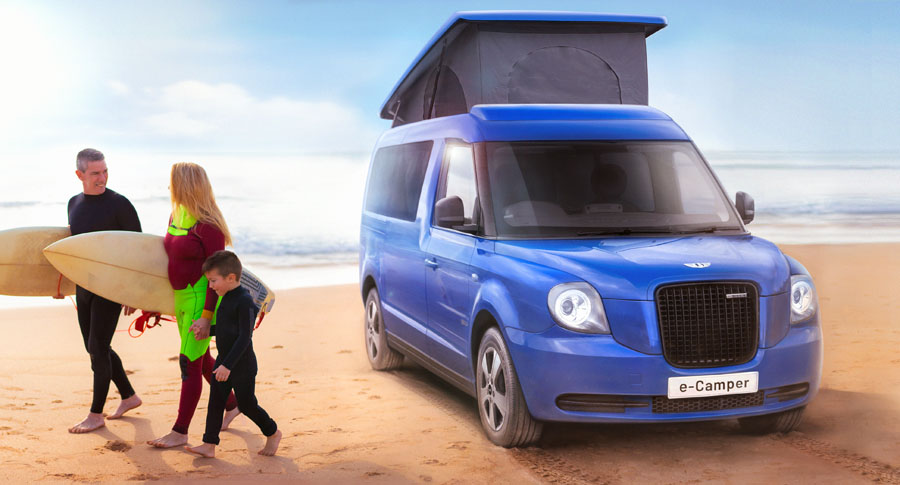
Family with surfboards walking on ocean coast. Side view of happy parents and little son in wetsuits holding hands and walking together on sandy beach. Surfing concept
This is a major conflict; we can see a shift in consumer attitudes, with demand for greener mobility solutions to help to protect and improve air quality. Our new electric, zero-emissions capable e-Camper offers the perfect solution and is well-equipped with high-quality features that can be tailored to meet a range of customer requirements.”
The e-Camper offers definitely meets the growing demand for independent, self-contained holidays, a trend accelerated by both the Covid pandemic and the search for more sustainable travel. LEVC sees huge potential across the UK and Europe and, in partnership with Wellhouse Leisure*, first deliveries of e-Camper, with an indicative list price (excl VAT) of £62,250 / €73,000.. Prospective customers can register their interest at levc.com/ecamper
Based on VN5, LEVC’s new electric van, e-Camper has the same pure EV range of over 60 miles** (98 km) with a total flexible range of 304 miles (489 km) and is designed for those who want to both protect and enjoy the outdoor environment. Its zero emissions capability delivers a low carbon footprint and its innovative range extender technology allows owners to travel off the beaten track, where there is no or limited charging infrastructure, with complete peace of mind. At the same time, owners can operate in zero emissions mode, ideal for the campsite and also even powering the integrated electric kitchenette without the need for fossil fuels.Watch this space.
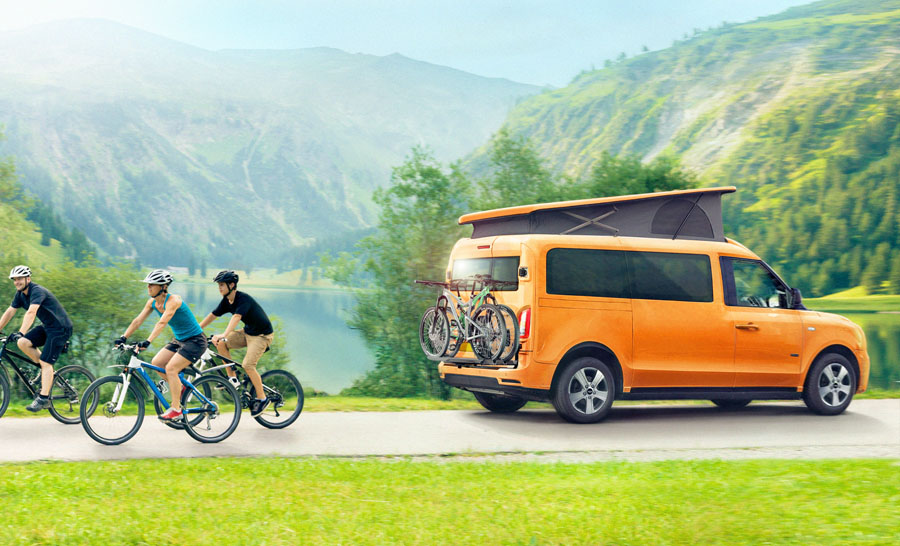
Flexibility and space are key attributes. The new LEVC e-Camper includes sleeping accommodation for four, an integrated electric kitchenette, pop-up roof (incorporating sleeping for two) and a central folding table. In addition, the campervan includes a second-row bench seat, which folds into the second double bed.
The pop-up roof creates standing room space for both the living and cooking areas and a single large sliding door makes entry to and exit from the living area easy. For outdoor leisure activities such as mountain biking and surfing, e-Camper will support a range of proprietary racks. The innovative e-Camper also boasts distinctive exterior design with styling cues inspired by LEVC’s TX electric taxi, a wide choice of paint colours, with coloured bumpers and alloy wheels, to stand out from the conventional campervan crowd.
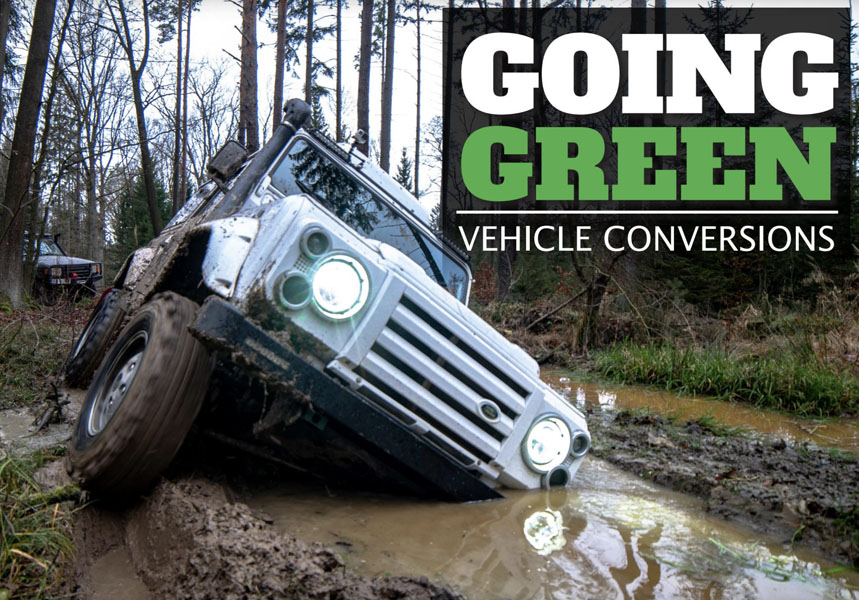
For those of us who are very attached to our 4WD vehicles, what options do we have when it comes to converting our pride and joys into electrical vehicles? Well there are a number of companies presently doing this throughout Europe. Some of these companies include the Dutch outfit Plowers and the Polish firm Innovation AG.There is no doubt that we will see a lot more demand for these conversions going into the future. We recently caught up with the Polish-based innovation AG who have a conversion called Falcon 4×4. Founded in 2012 Innovation AG uses a 300hp motor with 500Nm torque and an 85kWh battery pack. The Falcon 4×4 is a universal platform with 100% electric drive.The technologies implemented in Falcon 4×4 are ready to be transferred to any other vehicle from the electromobility market including Land Rover Defenders.The body itself can be freely modified, and technologies implemented individually for newly constructed vehicles and eco-conversions from existing vehicles.
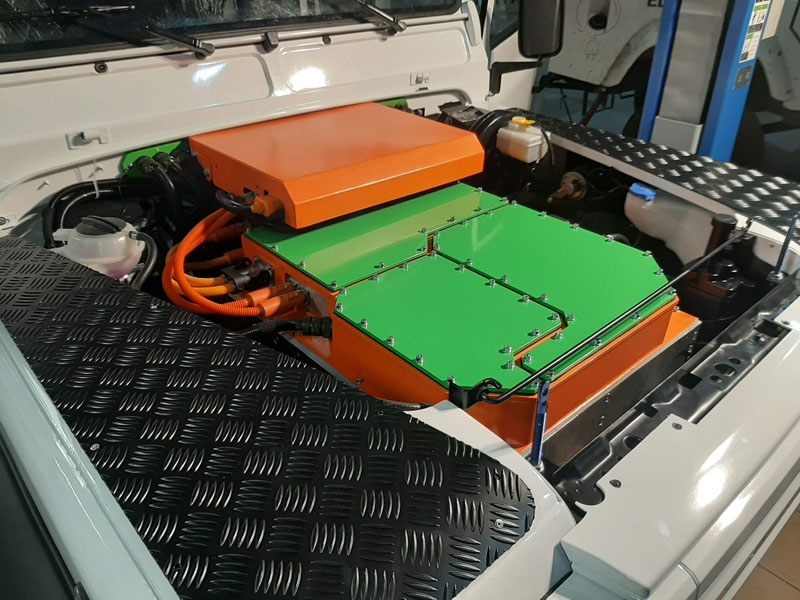
This technology continues to evolve and as highlighted by Innovation AG ‘’Ever since man built the first powered wheeled vehicle at the end of the 19th century, its designers were looking for a way to use it in difficult terrain.
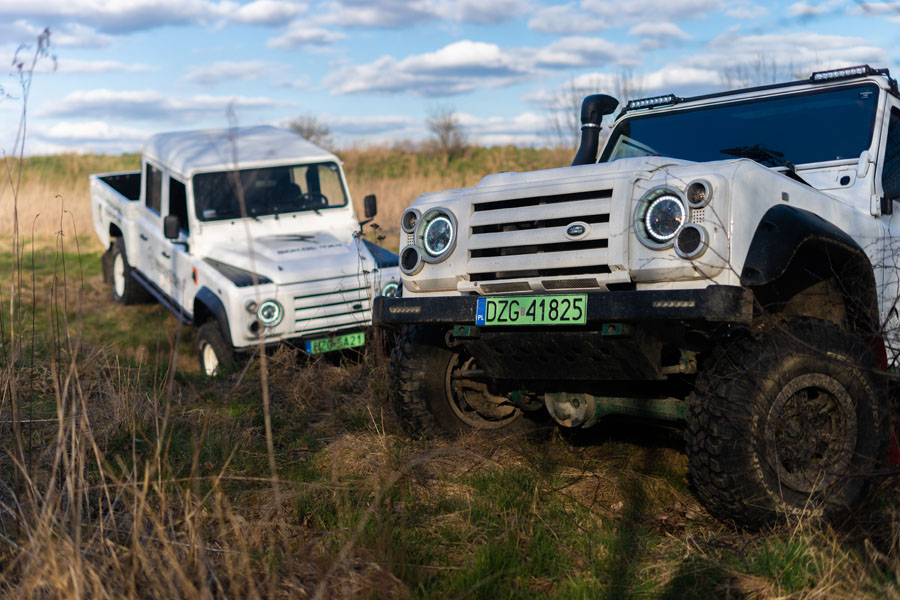
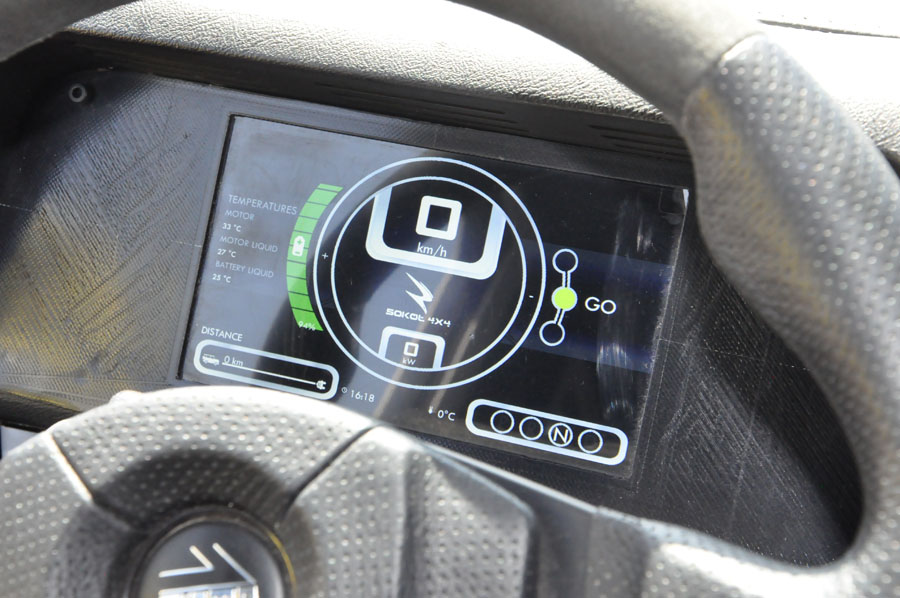 Let’s remember that 130 years ago there were no asphalt roads, no concrete highways, gas stations, parking lots and all the infrastructure that we beneficiaries use so eagerly today’’.Innovation AG consciously follows the path marked by the pioneers of the global automotive industry by converting used off-road vehicles. Joanne from Innovation AG highlighted that there are a number of advantages to their conversations and some of these include on average a six-time reduction in maintenance cost, reduction in greenhouse gases, noise reduction, reduction in waste materials, i.e. no more filters or engine and lastly for companies and individuals it creates a more positive image all round. For more information on the conversion process and costs please click here.
Let’s remember that 130 years ago there were no asphalt roads, no concrete highways, gas stations, parking lots and all the infrastructure that we beneficiaries use so eagerly today’’.Innovation AG consciously follows the path marked by the pioneers of the global automotive industry by converting used off-road vehicles. Joanne from Innovation AG highlighted that there are a number of advantages to their conversations and some of these include on average a six-time reduction in maintenance cost, reduction in greenhouse gases, noise reduction, reduction in waste materials, i.e. no more filters or engine and lastly for companies and individuals it creates a more positive image all round. For more information on the conversion process and costs please click here.
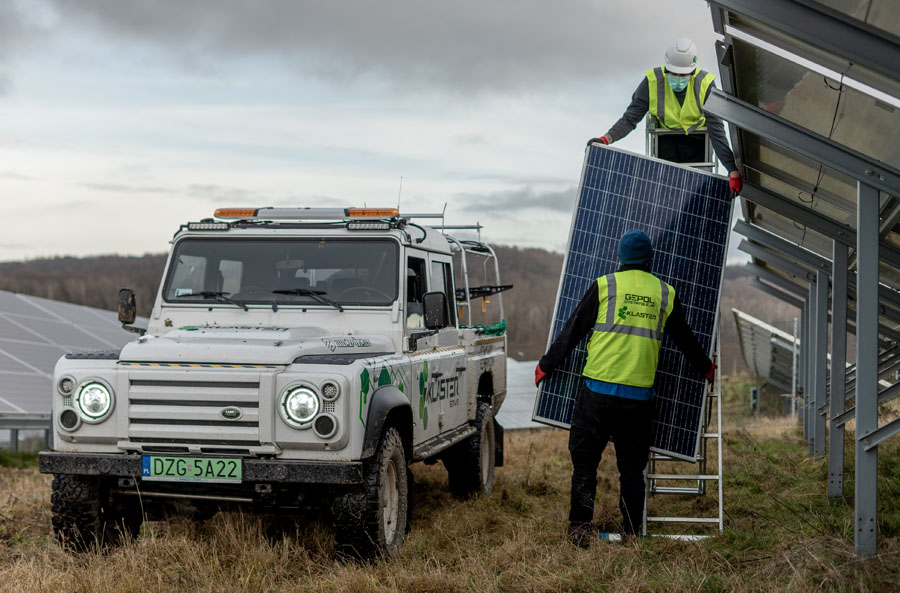
The Process
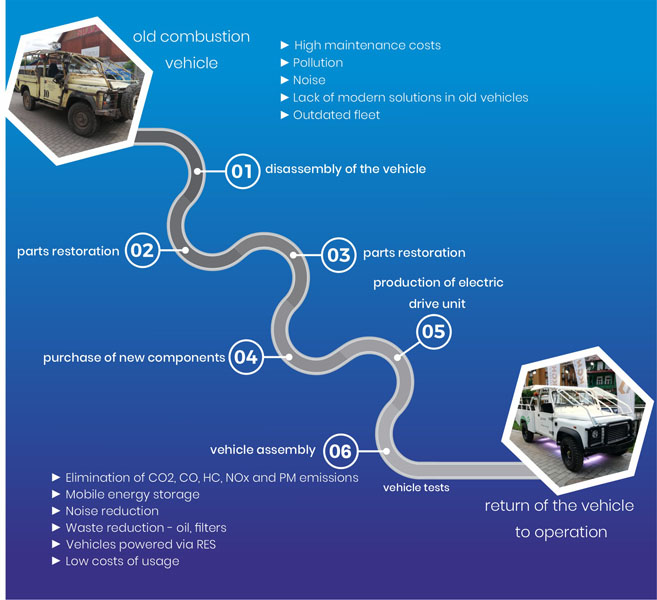

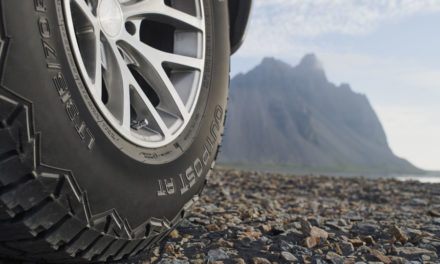
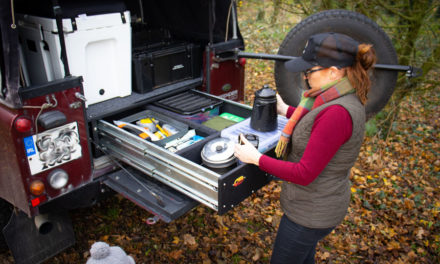
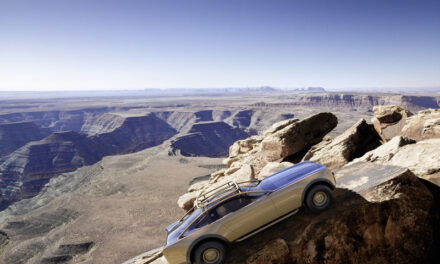
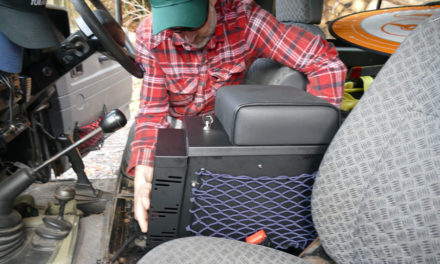


Recent Comments